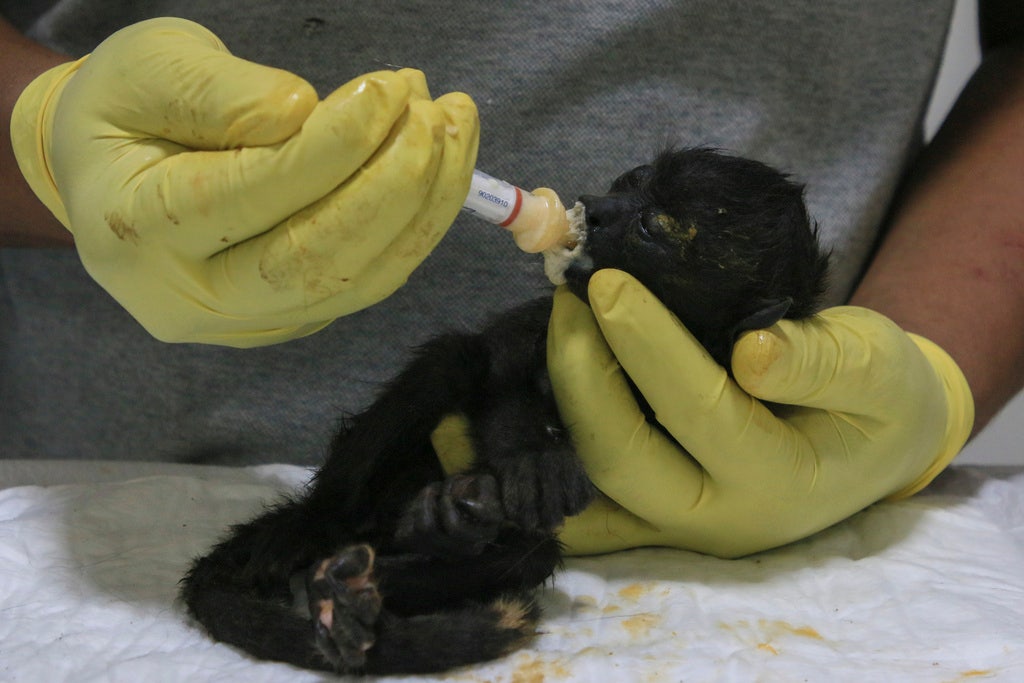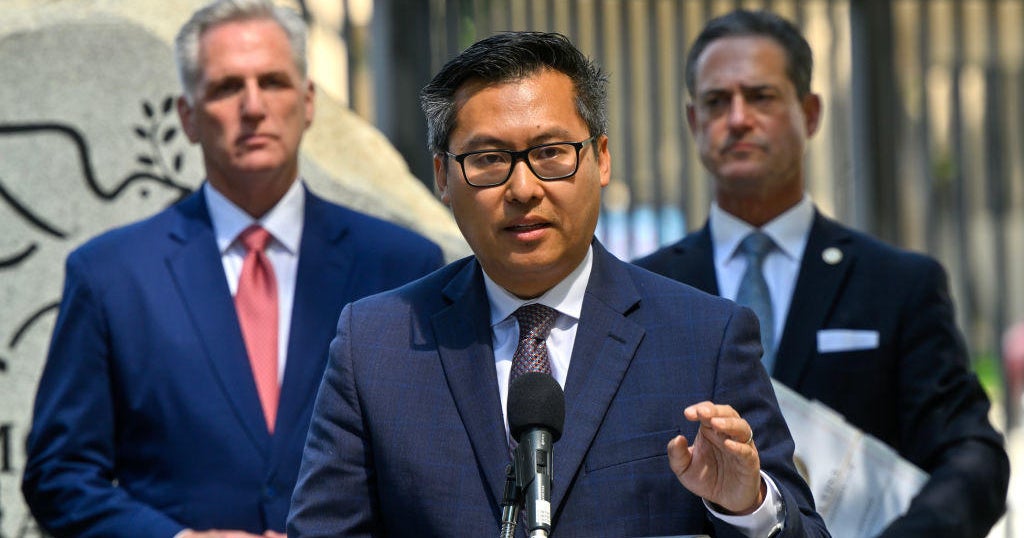Colorado
Colorado’s long COVID clinics can’t meet demand, so health leaders look to expand treatment

Colorado doesn’t have enough capacity to treat everyone suffering with long COVID at the three specialized clinics in the state, so public health leaders are trying to figure out ways for more people to get the care they need closer to home.
Three multidisciplinary clinics in the state see long COVID patients, at National Jewish Health in Denver, UCHealth in Aurora and Family Health West in Fruita. Together, they’ve treated about 10,000 people since mid-2020 — a significant number, but nowhere near everyone in need, said Dr. Sarah Jolley, medical director of the UCHealth Post-COVID Clinic.
Researchers estimated in November 2022 that between 228,000 and 651,000 Coloradans had symptoms that lingered after a COVID-19 infection, what has become known as long COVID.
Some people have relatively mild symptoms, such as loss of smell, while others are unable to work or care for themselves because of extreme fatigue or “brain fog.” Some report their conditions improve over time, while others see no change or get worse.
One idea to bring care to more people with long COVID is building on Project Extension for Community Health Outcomes, or ECHO, which connects primary care providers with specialists to learn how to manage certain conditions locally and to discuss complex patients. It started in New Mexico and initially focused on teaching rural providers to treat patients with hepatitis C, but has expanded over time.
Dr. Kyle Leggott, primary care liaison for Project ECHO in Colorado, said the group put together seven online courses to cover the basics of long COVID care, which are free to providers who want them. They’re still working on setting up groups for more in-depth training and consultation, he said.
“We really need every provider who meets patients in the ambulatory care setting to know what long COVID is,” he said.
Even if care is available in someone’s community, it doesn’t do much good if they can’t afford it, said Chelsey Baker-Hauck, a long COVID patient who spoke at a roundtable hosted by Lt. Gov. Dianne Primavera on Wednesday. She said one drug seems to be preventing more damage from her immune system attacking multiple body tissues, but it was a tough fight to get her insurance to cover it, and she expects to have to go through the same battle again soon.
The state also needs to make other supports more accessible, like disability payments, Baker-Hauck said. A friend of hers who also has long COVID recently lost her home because she was unable to work and spent much of her savings trying to repair her immune system, which is no longer protecting her from routine infections, she said.
“She’s not going to live to see her first disability payment,” she said.
Research suggests people newly infected with COVID-19 now are at a lower risk for lingering symptoms than they were earlier in the pandemic, due to immunity from vaccination and prior infections, as well as changes in the virus itself. That said, some still become seriously ill, placing them at a higher risk for long COVID.
As of Tuesday, 267 people in Colorado were hospitalized for COVID-19, and the number of people admitted on an average day was rising both in the state and nationwide.
Alison Sbrana, a disability activist from Fort Collins who spoke at the roundtable in Aurora, said the state’s infrastructure for treating post-viral syndromes has improved since the pandemic started.
She developed myalgic encephalomyelitis, also known as chronic fatigue syndrome, in 2014 after an infection with the virus that causes mononucleosis. She bounced from specialist to specialist for years with no help, and it was extremely difficult to find someone who could treat her health as a whole and coordinate her care, she said.
While having three multidisciplinary clinics is an improvement over the landscape when she got sick, patients with post-viral conditions still face significant barriers to care, Sbrana said. For example, some people with cognitive symptoms of long COVID can’t drive, and not everyone has a relative or friend who can take them to Denver for appointments, she said.
“It would be an enormous lift for me to come down here and get care,” Sbrana said.
Project ECHO could be a partial solution, especially since the organizers seem interested in hearing from patients about what isn’t working in the current system, Sbrana said. Primary care doctors are accustomed to managing their patients’ health needs, so involving them would take the burden of scheduling and coordination off people struggling with daily life, she said.
“If you can keep it in primary care and teach them what they need to know… you’re going to prevent these patients falling through the cracks,” she said.
Sign up for our weekly newsletter to get health news sent straight to your inbox.

Colorado
Oakland A’s find right formula to beat Colorado Rockies, end skid

OAKLAND – The Oakland A’s turned to the long ball to help end their season-long eight-game losing streak on Tuesday.
J.D. Davis, Seth Brown, and Abraham Toro all homered, with Toro’s shot over the right field wall in the bottom of the eighth inning proving to be the difference in the A’s 5-4 win over the Colorado Rockies before an announced crowd of 4,005 at the Coliseum.
A’s closer Mason Miller was electric as he touched 102.8 mph in the ninth inning with his fastball, striking out all three batters he faced to earn his ninth save of the season.
Toro’s solo home run was his fifth of the season, as he turned on an 89-mph slider from Rockies reliever Tyler Kinley.
Before Tuesday, the A’s were tied for fourth in the majors in home runs in May with 23.
Toro pumped his fist as he rounded first base as the A’s earned their first win since they beat Seattle 8-1 on May 11. Oakland went 1-9 on their recently completed road trip.
For six innings, the A’s were mostly stymied by Rockies starter and former Stanford standout Cal Quantrill.
The A’s got a badly needed homer from Davis in the third inning but managed just two other hits against Quantrill, who allowed three hits and two earned runs – and eight strikeouts — in six innings.
Against Quantrill, the A’s could only manage a Brent Rooker double in the fourth inning and a JJ Bleday triple in the sixth. Bleday then scored on a wild pitch from Quantrill.
That’s why the A’s, down 4-2, had to like seeing Justin Lawrence enter the game in the seventh inning. And after Zack Gelof walked, Brown smoked a 95-mph sinker from Lawrence 414 feet over the center field wall to tie the game 4-4.
The homer was Brown’s fifth of the season and his second in the last three games.
Davis hit his third home run of the season, and his first in 26 games since he hit two on March 29 against Cleveland.
The A’s would love to see him and Davis, two players who combined for 32 home runs last season, get hot as they try to pull out of an offensive malaise that has lasted most of May.
During this stretch before Tuesday, which saw them lose 13 of 15 games, the A’s scored three runs or fewer 10 times. Before Tuesday, Oakland, in the majors, had the third-lowest batting average (.220), were tied for third in fewest runs (180), had the fourth lowest on-base percentage (.295), and were tied for fourth in fewest stolen bases (21).
Strikeouts have been an absolute killer for the A’s. Before Tuesday, they had 151 in their last 15 games.
The home runs helped the A’s overcome so-so outings from starting pitcher Aaron Brooks, who allowed three earned runs over six innings. and veteran Scott Alexander allowed a solo home run in his two-thirds of an inning in relief.
Colorado
Two people exposed to bat with rabies in Englewood

Two people were exposed to a bat with rabies in Englewood, Arapahoe County officials said Tuesday.
The bat is the fourth case of rabies confirmed in Colorado this year and the first in Arapahoe County, the county said in a news release. Most cases of rabies in Colorado are found in bats — of the 55 cases reported statewide in 2023, 47 were bats.
The bat was found near Quincy Avenue and Santa Fe Drive, and two people exposed to the bat started treatment to prevent infection.
Any person or pet who came into direct contact with a bat, especially near that area, should contact Arapahoe County Public Health and their doctor.
Most exposures come from scratches or bites, but bat bites can be tiny and often painless, said Melissa Adair, Arapahoe County communicable disease epidemiology manager.
A bat with rabies was also found outside a Colorado Springs elementary school on May 14, El Paso County Public Health said in a Facebook post. The bat was found at Grant Elementary School but public health officials do not believe it came into contact with any students or staff, Denver7 reported.
Three other cases of rabid bats — one in Boulder County and two in Larimer County — have been reported so far this year, according to the Colorado Department of Public Health and Environment.
People can prevent rabies exposure by vaccinating pets and livestock and keeping them away from any wildlife and by not feeding or touching wild animals, including baby animals, county officials said Tuesday.
Get more Colorado news by signing up for our daily Your Morning Dozen email newsletter.
Colorado
We’re number 3! Colorado Springs ranked 3rd on ‘Best Places to Live in U.S.’ list

COLORADO SPRINGS, Colo. (KKTV) – If you live in Colorado Springs, you are living in one of the best places in the country!
So says U.S. News’ annual “Best places to live in the U.S.” list!
The list places the Olympic City third out of the 25 cities that made this year’s cut, coming in just behind Naples, Florida, and Boise, Idaho, and ahead of some of the usual suspects, like Austin.
The next-best Colorado city, according to U.S. News, is Boulder, coming in at 10th. No other places in the Centennial State made the cut.
The rankings analyze 150 cities, taking into account housing affordability, household income, quality of education, access to health care, crime rates, commute times, and air quality, among other criteria.
The full rankings:
1. Naples, Florida
2. Boise, Idaho
3. Colorado Springs
4. Greenville, South Carolina
5. Charlotte, North Carolina
6. Raleigh, North Carolina
7. Huntsville, Alabama
8. Virginia Beach, Virginia
9. Austin, Texas
10. Boulder, Colorado
11. Sarasota, Florida
12. Green Bay, Wisconsin
13. Charleston, South Carolina
14. Madison, Wisconsin
15. Lexington, Kentucky
16. Oklahoma City, Oklahoma
17. Asheville, North Carolina
18. Omaha, Nebraska
19. Ann Arbor, Michigan
20. Fort Wayne, Indiana
21. Fayetteville, Arkansas
22. San Francisco, California
23. Greensboro, North Carolina
24. Lincoln, Nebraska
25. South Bend, Indiana
Copyright 2024 KKTV. All rights reserved.
-

 News1 week ago
News1 week agoSkeletal remains found almost 40 years ago identified as woman who disappeared in 1968
-

 World1 week ago
World1 week agoUkraine’s military chief admits ‘difficult situation’ in Kharkiv region
-

 Movie Reviews1 week ago
Movie Reviews1 week agoAavesham Movie Review
-

 World1 week ago
World1 week agoCatalans vote in crucial regional election for the separatist movement
-

 Education1 week ago
Education1 week agoVideo: Protesters Scuffle With Police During Pomona College Commencement
-

 News1 week ago
News1 week agoNevada Cross-Tabs: May 2024 Times/Siena Poll
-

 World1 week ago
World1 week agoEU's divided right wing can disrupt if it finds greater unity: experts
-

 News1 week ago
News1 week agoControlled demolition planned at Baltimore bridge collapse site









/cdn.vox-cdn.com/uploads/chorus_asset/file/25379248/247075_Humane_AI_pin_AKrales_0120.jpg)








